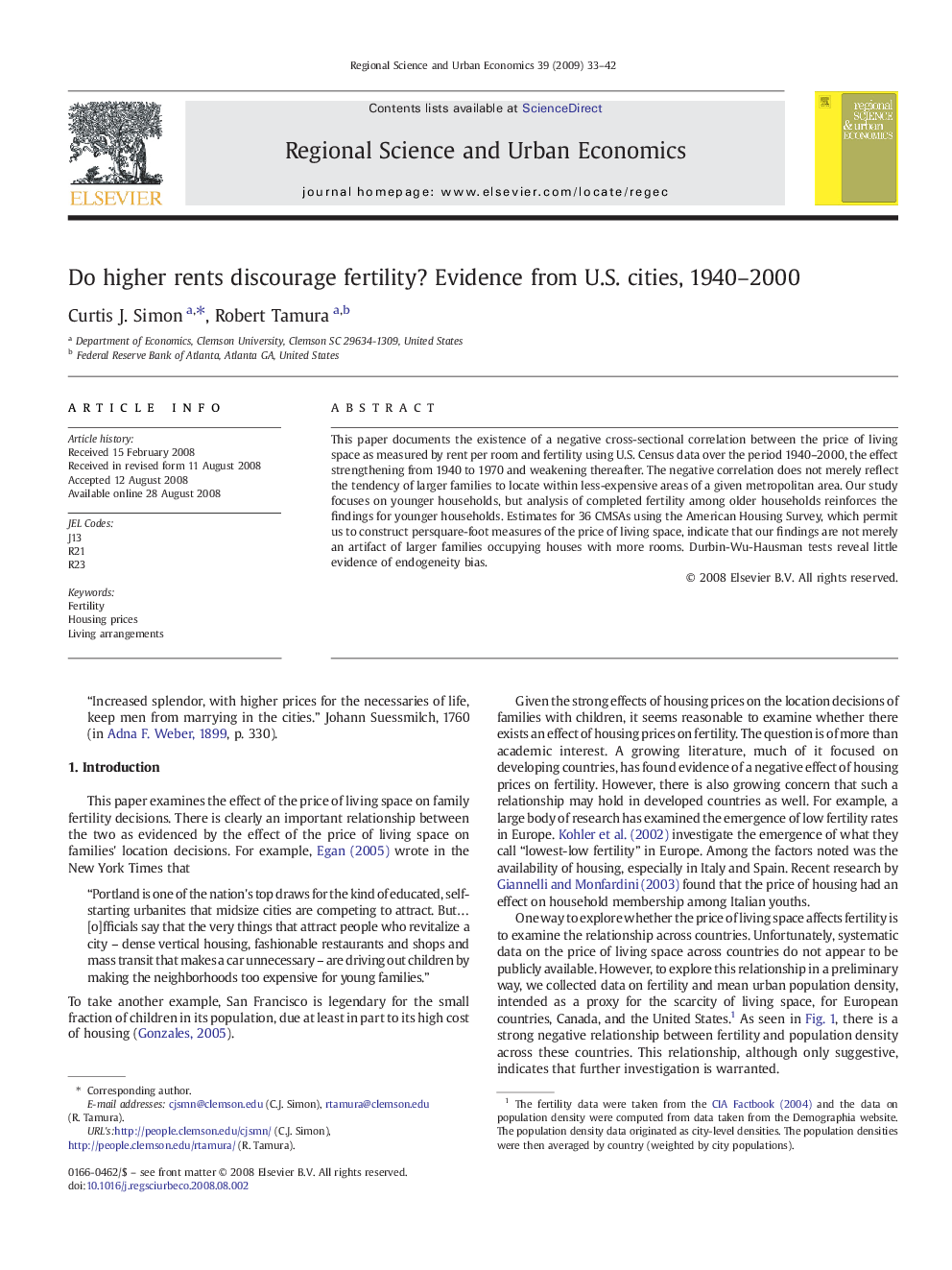| Article ID | Journal | Published Year | Pages | File Type |
|---|---|---|---|---|
| 983907 | Regional Science and Urban Economics | 2009 | 10 Pages |
This paper documents the existence of a negative cross-sectional correlation between the price of living space as measured by rent per room and fertility using U.S. Census data over the period 1940–2000, the effect strengthening from 1940 to 1970 and weakening thereafter. The negative correlation does not merely reflect the tendency of larger families to locate within less-expensive areas of a given metropolitan area. Our study focuses on younger households, but analysis of completed fertility among older households reinforces the findings for younger households. Estimates for 36 CMSAs using the American Housing Survey, which permit us to construct persquare-foot measures of the price of living space, indicate that our findings are not merely an artifact of larger families occupying houses with more rooms. Durbin-Wu-Hausman tests reveal little evidence of endogeneity bias.
